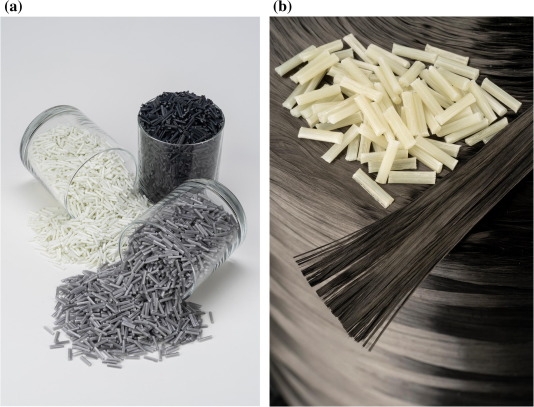Blind rivets, commonly known as pop rivets, are an essential fastening solution when access to only one side of a material is available. They form permanent, secure, and vibration-resistant joints, making them widely used in industries such as construction, automotive, aerospace, marine, and industrial manufacturing. Among the most commonly employed types are aluminum, steel, and stainless steel blind rivets, each offering unique benefits for different materials, load requirements, and environmental conditions.
https://www.global-tuyue.com/aluminium-steel-and-ss-blind-rivets/
Aluminum Blind Rivets – Lightweight and Corrosion-Resistant
Aluminum blind rivets are prized for their lightweight design, ease of installation, and natural resistance to corrosion. They are ideal for applications where minimizing weight is crucial, including HVAC systems, signage, electronics assemblies, and transport components. Aluminum rivets perform well with softer or thinner materials, such as aluminum sheets, plastics, and light alloys, providing strong fastening without damaging surfaces. Their corrosion-resistant properties make them suitable for outdoor or humid environments, and their quick installation makes them a versatile choice for both industrial and DIY projects.
Steel Blind Rivets – High Strength and Durable
Steel blind rivets offer greater tensile and shear strength than aluminum, making them suitable for heavy-duty applications that require long-lasting stability. They are commonly used in machinery assembly, automotive repairs, structural frameworks, and industrial equipment. Steel rivets form vibration-resistant joints capable of withstanding repeated stress and heavy loads. While untreated steel may be susceptible to rust, galvanized or zinc-plated steel rivets enhance durability and extend service life. Steel blind rivets combine strength, reliability, and cost-effectiveness, making them ideal for demanding industrial and commercial projects.
Stainless Steel Blind Rivets – Maximum Strength and Longevity
Stainless steel blind rivets are engineered for the most challenging environments, offering exceptional mechanical strength and outstanding resistance to corrosion. They are commonly applied in marine equipment, outdoor structures, medical devices, and food-processing machinery. Stainless steel rivets maintain both structural integrity and aesthetic appeal over time, resisting rust, staining, and wear. Although they are more expensive than aluminum or steel, their durability and minimal maintenance make them a cost-effective solution for critical applications where performance and reliability are essential.
Advantages of Blind Rivets
All three types of rivets share key benefits:
Single-sided installation, ideal for hard-to-reach areas.
Quick and efficient fastening, reducing labor and assembly time.
Permanent, vibration-resistant joints, ensuring long-term stability.
Versatile material compatibility, suitable for metals, plastics, and composite materials.
Choosing the Right Material
Aluminum rivets: Lightweight, corrosion-resistant, ideal for non-structural or outdoor use.
Steel rivets: Strong, durable, and economical for heavy-duty projects.
Stainless steel rivets: High-strength, corrosion-resistant, perfect for harsh or critical environments.
Whether for small repairs, industrial assemblies, or outdoor constructions, aluminum, steel, and stainless steel blind rivets provide secure, durable, and versatile fastening solutions suitable for virtually every application. Their combination of strength, corrosion resistance, and ease of installation makes them indispensable in any professional or home toolkit.
Blind rivets, commonly known as pop rivets, are an essential fastening solution when access to only one side of a material is available. They form permanent, secure, and vibration-resistant joints, making them widely used in industries such as construction, automotive, aerospace, marine, and industrial manufacturing. Among the most commonly employed types are aluminum, steel, and stainless steel blind rivets, each offering unique benefits for different materials, load requirements, and environmental conditions.
https://www.global-tuyue.com/aluminium-steel-and-ss-blind-rivets/
Aluminum Blind Rivets – Lightweight and Corrosion-Resistant
Aluminum blind rivets are prized for their lightweight design, ease of installation, and natural resistance to corrosion. They are ideal for applications where minimizing weight is crucial, including HVAC systems, signage, electronics assemblies, and transport components. Aluminum rivets perform well with softer or thinner materials, such as aluminum sheets, plastics, and light alloys, providing strong fastening without damaging surfaces. Their corrosion-resistant properties make them suitable for outdoor or humid environments, and their quick installation makes them a versatile choice for both industrial and DIY projects.
Steel Blind Rivets – High Strength and Durable
Steel blind rivets offer greater tensile and shear strength than aluminum, making them suitable for heavy-duty applications that require long-lasting stability. They are commonly used in machinery assembly, automotive repairs, structural frameworks, and industrial equipment. Steel rivets form vibration-resistant joints capable of withstanding repeated stress and heavy loads. While untreated steel may be susceptible to rust, galvanized or zinc-plated steel rivets enhance durability and extend service life. Steel blind rivets combine strength, reliability, and cost-effectiveness, making them ideal for demanding industrial and commercial projects.
Stainless Steel Blind Rivets – Maximum Strength and Longevity
Stainless steel blind rivets are engineered for the most challenging environments, offering exceptional mechanical strength and outstanding resistance to corrosion. They are commonly applied in marine equipment, outdoor structures, medical devices, and food-processing machinery. Stainless steel rivets maintain both structural integrity and aesthetic appeal over time, resisting rust, staining, and wear. Although they are more expensive than aluminum or steel, their durability and minimal maintenance make them a cost-effective solution for critical applications where performance and reliability are essential.
Advantages of Blind Rivets
All three types of rivets share key benefits:
Single-sided installation, ideal for hard-to-reach areas.
Quick and efficient fastening, reducing labor and assembly time.
Permanent, vibration-resistant joints, ensuring long-term stability.
Versatile material compatibility, suitable for metals, plastics, and composite materials.
Choosing the Right Material
Aluminum rivets: Lightweight, corrosion-resistant, ideal for non-structural or outdoor use.
Steel rivets: Strong, durable, and economical for heavy-duty projects.
Stainless steel rivets: High-strength, corrosion-resistant, perfect for harsh or critical environments.
Whether for small repairs, industrial assemblies, or outdoor constructions, aluminum, steel, and stainless steel blind rivets provide secure, durable, and versatile fastening solutions suitable for virtually every application. Their combination of strength, corrosion resistance, and ease of installation makes them indispensable in any professional or home toolkit.




